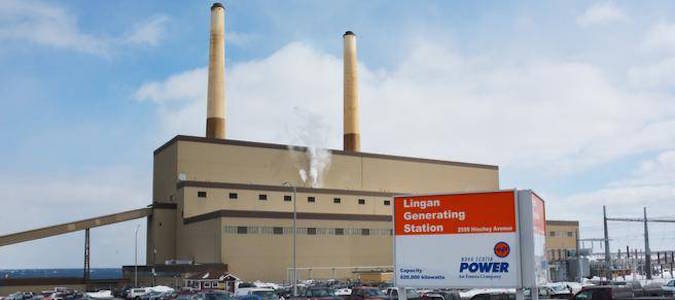
Nova Scotia in carbon-pricing caboose
You don’t need to explain the connection between the economy and the environment to a Nova Scotian. Where livelihoods have long been affected by changes in the ocean, the economic consequences of climate change are well understood.
Even though Nova Scotia has adopted some of the strongest renewable energy targets in Canada, why is it now standing by while other provinces move forward with policies designed to make serious headway on reducing greenhouse-gas emissions? We’re talking about carbon pricing — and, in our opinion, Nova Scotia should be, too.
When Ontario finalizes its policy a few months from now, three-quarters of Canadians will live in a jurisdiction that prices carbon. British Columbia has its revenue-neutral carbon tax. Alberta has its Specified Gas Emitters Regulation (and perhaps something more in the near future). Quebec’s cap-and-trade system already links with California’s and will soon be joined with Ontario’s.
These systems are designed differently to meet the varying needs of each province. But they all share a common principle — price the activities that hurt our economy and environment, while providing market incentives for innovation, investment and jobs. Last month in Newfoundland, Preston Manning talked about the general principle of pricing pollution this way: “It’s unhelpful to polarize over economic development versus environmental conservation … because most Canadians want both,” he said.
There is nothing more “Canadian” than searching for the middle way between two extremes. That is the opportunity that pricing pollution — and pricing carbon — represents to all Canadian provinces.
There are basically two ways to achieve alignment between environmental and economic goals. The first is top-down regulation. This necessitates substantial government intervention and is essentially a “thou shalt not” approach.
To steal a line from David Paterson, vice-president at General Motors, using a one-size-fits-all regulation to reduce carbon emissions is like saying we need to lose some weight, so now everyone must fit into a size 32 pair of pants.
Carbon pricing is the better way to reduce GHG emissions for the economy
The second way to reduce greenhouse-gas emissions is to harness the power of markets by getting economic incentives right. Pricing pollution makes harming the environment more expensive and, therefore, solving environmental challenges — whether through different practices, technology or innovation — more valuable. It provides people and businesses with choices about how to reduce their emissions in the most practical and profitable way for them.
A recent report by Canada’s Ecofiscal Commission shows that pricing carbon emissions — rather than reducing them through regulations — is much better for the economy.
Its advantage doesn’t come only from better flexibility for people and businesses, although that matters a lot. It’s also driven by the fact that carbon pricing — whether by tax or cap-and-trade — generates revenue.
If used wisely, that revenue can create further economic benefits. British Columbia uses all revenue from its carbon policy to reduce personal and business taxes. Alberta channels its revenue into a technology fund to support innovation. Quebec’s revenue is directed toward climate-change projects as well as public transportation. Different benefits flow from different choices, but all can drive a better economy.
Nova Scotia: doing the right thing for the environment and the economy is in our DNA
So where is Nova Scotia in this discussion? Not completely on the sidelines, it turns out. Last year, Laurel Broten’s much discussed report, Charting a Path for Growth, identified carbon pricing as an avenue worth exploring. Nova Scotia’s Minister of Finance has not ruled it out, though no mention of it appeared in the recent budget. Perhaps there is one toe in the water. What would it take for Nova Scotia to dive a little deeper?
How about a “middle way” conversation about the issue, free from polarization? If the CEO of Canada’s largest oil company can call for a price on carbon — which happened two weeks ago in Calgary — then certainly Nova Scotians of all stripes can at least consider the idea. And there is much to consider.
For example, which mechanism would make the most sense for Nova Scotia — a tax, a cap-and-trade system, some combination of the two? How should government use the revenue generated by such a policy? Is there a case for cutting personal and business taxes, or for investing in clean technology or energy efficiency? And how can we co-ordinate our approach with those in the other Atlantic provinces?
Nova Scotians have a particular way of looking at things, shaped by a deep, historic connection to the environment. No one should expect us to think about carbon pricing the exact same way other Canadians do. But we should be thinking about it. After all, doing the right thing for the environment and the economy is in our DNA.
About the Authors
Elizabeth Beale is the president and CEO of the Atlantic Provinces Economic Council. Chris Ragan is the chair of Canada’s Ecofiscal Commission. The two organizations will host a public roundtable, the Business of Carbon Pricing in Atlantic Canada, on Friday, June 5.
To learn more about Canada’s carbon pricing systems, including B.C.’s carbon tax and Quebec’s cap-and-trade system, check out the interactive summary of our report “The Way Forward: A Practical Approach to Reducing Canada’s Greenhouse Gas Emissions”.
Launch the Interactive Summary




Comments are closed.